 Previous Day |
Delhi, DH → Agra, UP 142.9 mi (230.0 km) |
 Next Stage |
Agra should be called Argh-gra, everyone!
Let me retrace my steps here. Mr. Annu picked me up at 9:30 AM for a 3-hour drive from Delhi to our next stop on the Golden Triangle: Agra, heart of the Mughal Empire from 1526 until 1648! Along the way, we passed at least one car going the wrong way down the freeway and paused so Mr. Annu could throw a plastic bag into the Yamuna River. He said they were prayer cards left behind by a previous driver, and while he didn’t want them in the car, he couldn’t just throw them in a garbage can. We passed Mathura, where it’s believed that Krishna was first born, but our destination was straight ahead at the Jaypee Palace Hotel & Convention Centre!
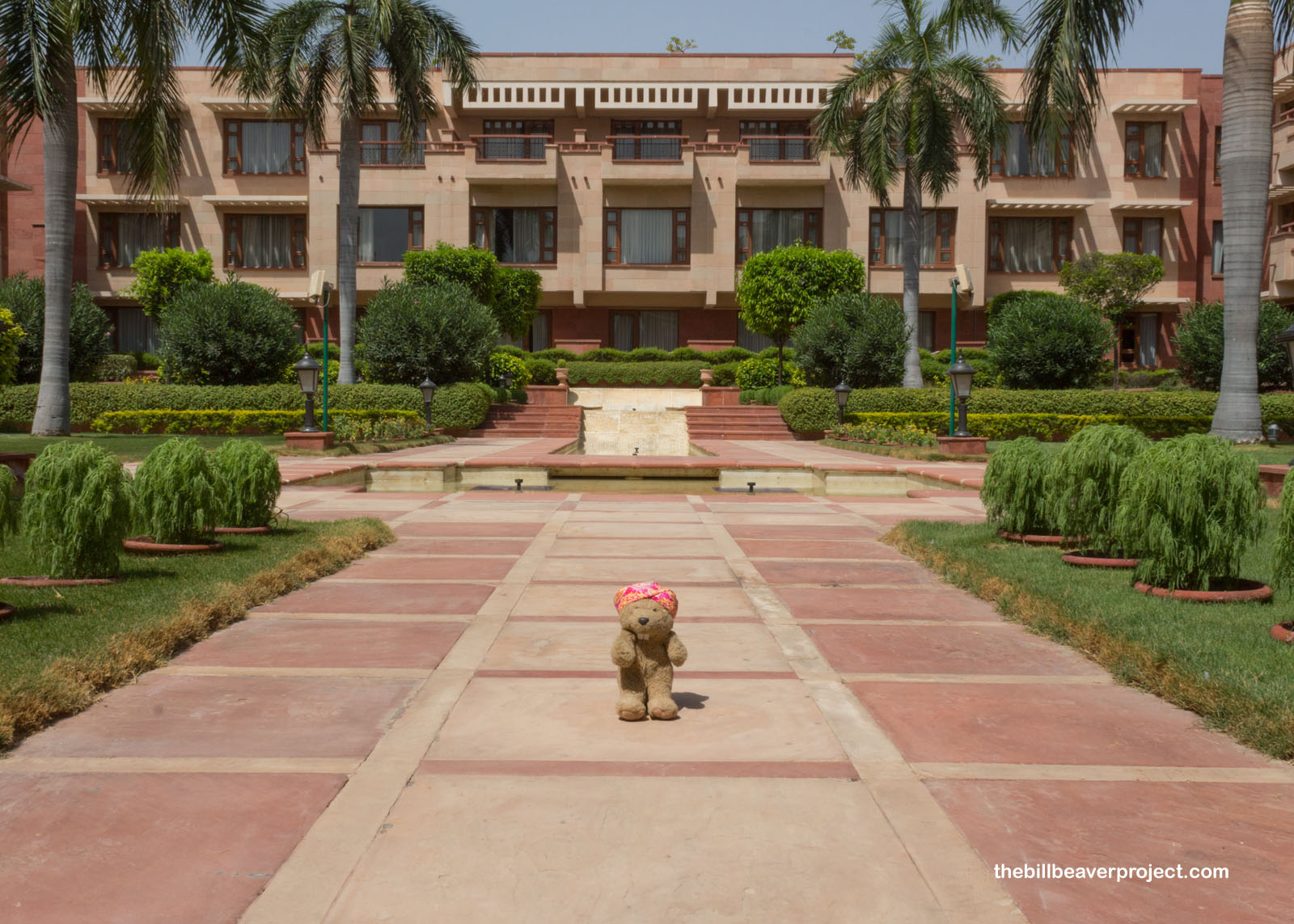 |
What a welcome! Mr. Annu dropped me off to settle in before our 4:00 outing, and the nice folks gave me some refreshments and a marigold necklace to symbolize a bright future! Though these marigolds are native to Mexico, they’ve become very popular as a festival flower over here on the Indian subcontinent! Then, when I got to the room, there were plates of fruit and cookies nicely placed and ready for snacking! My first impression of Agra was pretty wonderful, which was perfect for the city where I planned to see my next Wonder of the World!
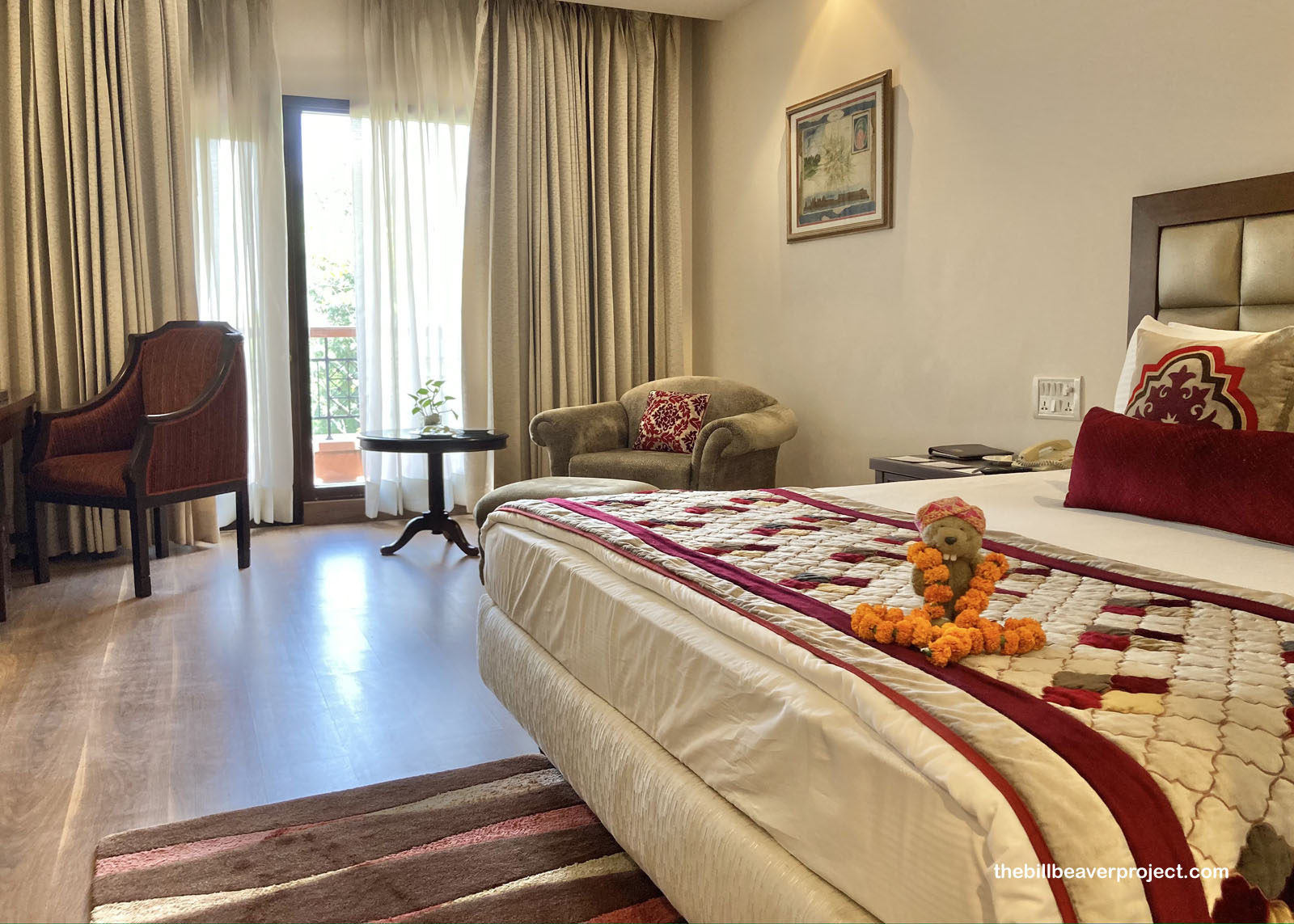 |
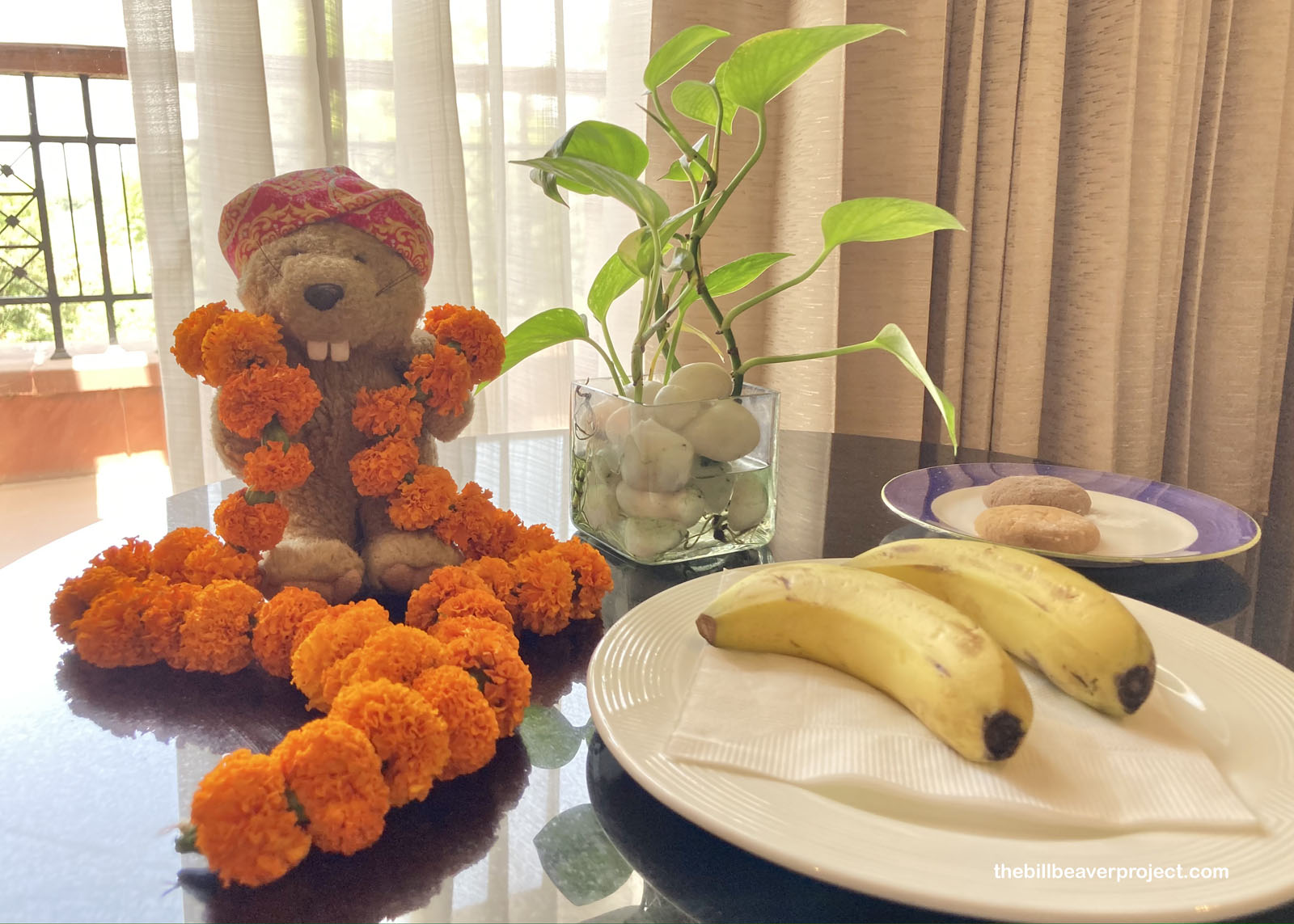 |
And then I stepped outside, where it was 117˚F (47.7˚C), and nearly became a wrinkled, orange thing myself! It was a shame because the Jaypee Palace boasted all kinds of outdoor activity, like nature trails and gardens. It was just too hot and too polluted to enjoy! I had to hurry back inside because my toes were burning!
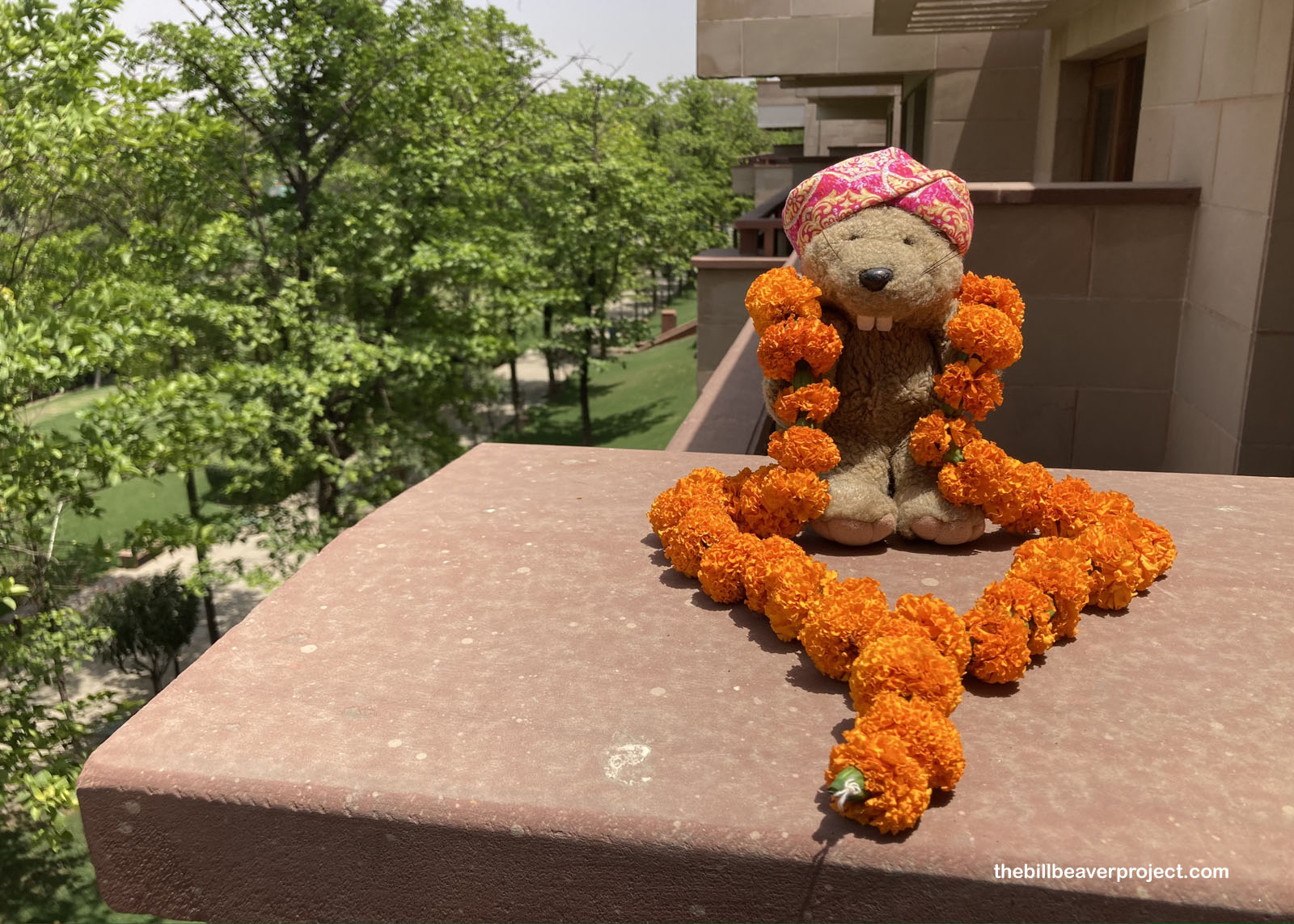 |
After three hours of absorbing as much air conditioning as I could, Mr. Annu returned at 4:00, and we headed into the city, picking up our next guide, Mr. Dubey, along the way. His first words were about tipping, which was kind of off-putting as we headed into old Agra with its wandering street cows galore! Our first stop was the tomb of I’timad-Ud-Daulah, sometimes called the “Baby Taj,” sort of a rough draft of the Taj Mahal, which wouldn’t be commissioned for another ten years. The guards looked at me really, really funny and asked a lot of questions about who I was and what I was doing here. Mr. Dubey wasn’t sure either, but they figured I was harmless and let me pass.
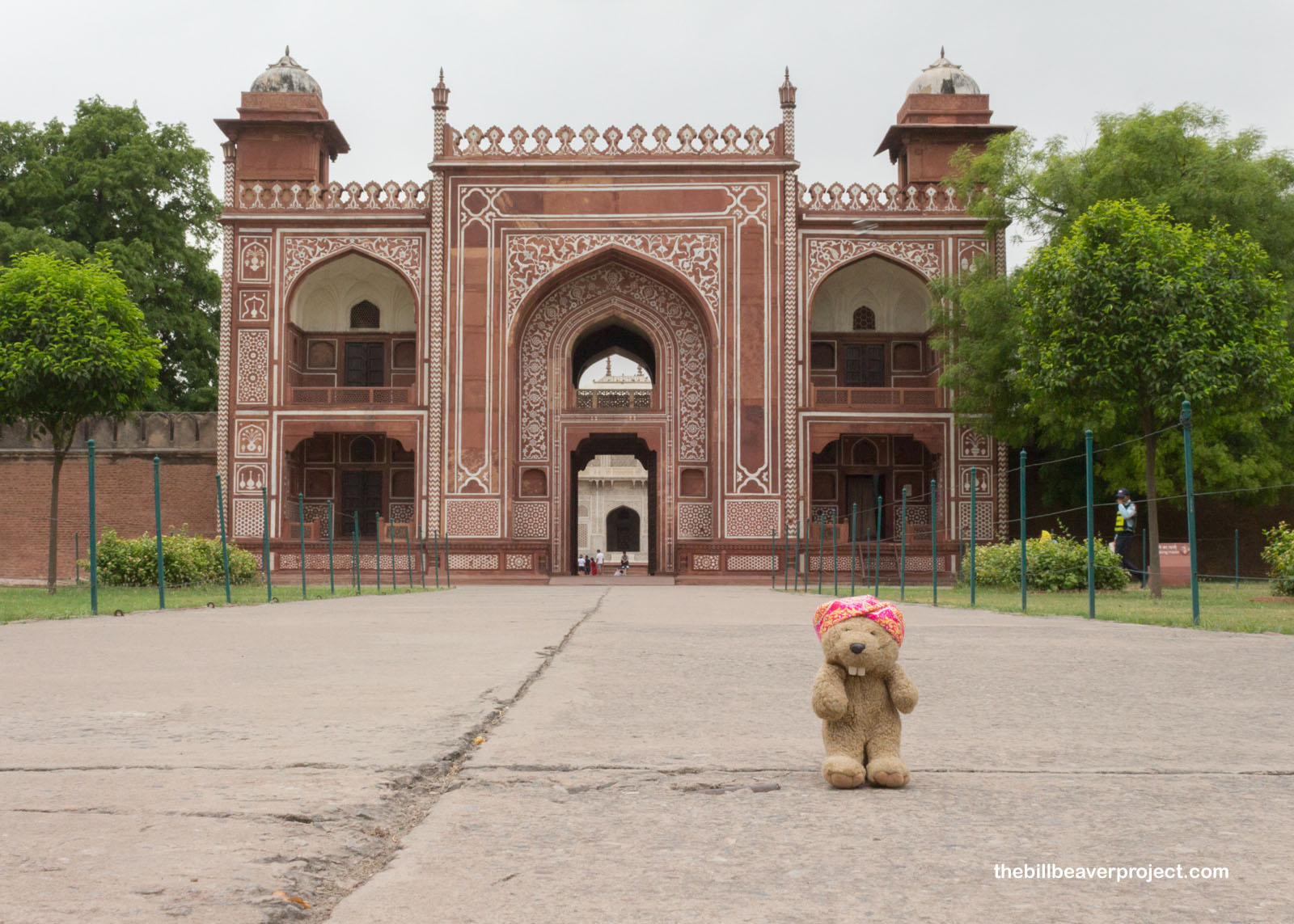 |
Like Humayun’s Tomb, the “Baby Taj” is set up as a charbagh, or four-quartered garden, meant to be perfectly symmetrical on all sides. Unlike Humayun’s Tomb, which was built from red sandstone, this tomb for Mirza Ghiyas Beg (the I’timad-Ud-Daulah, or Lord Treasurer) and his wife, Asmat Beghum, was made of marble with semi-precious stone inlay! Most of the decorations were floral because Islamic tradition forbids the depiction of living animals, humans included!
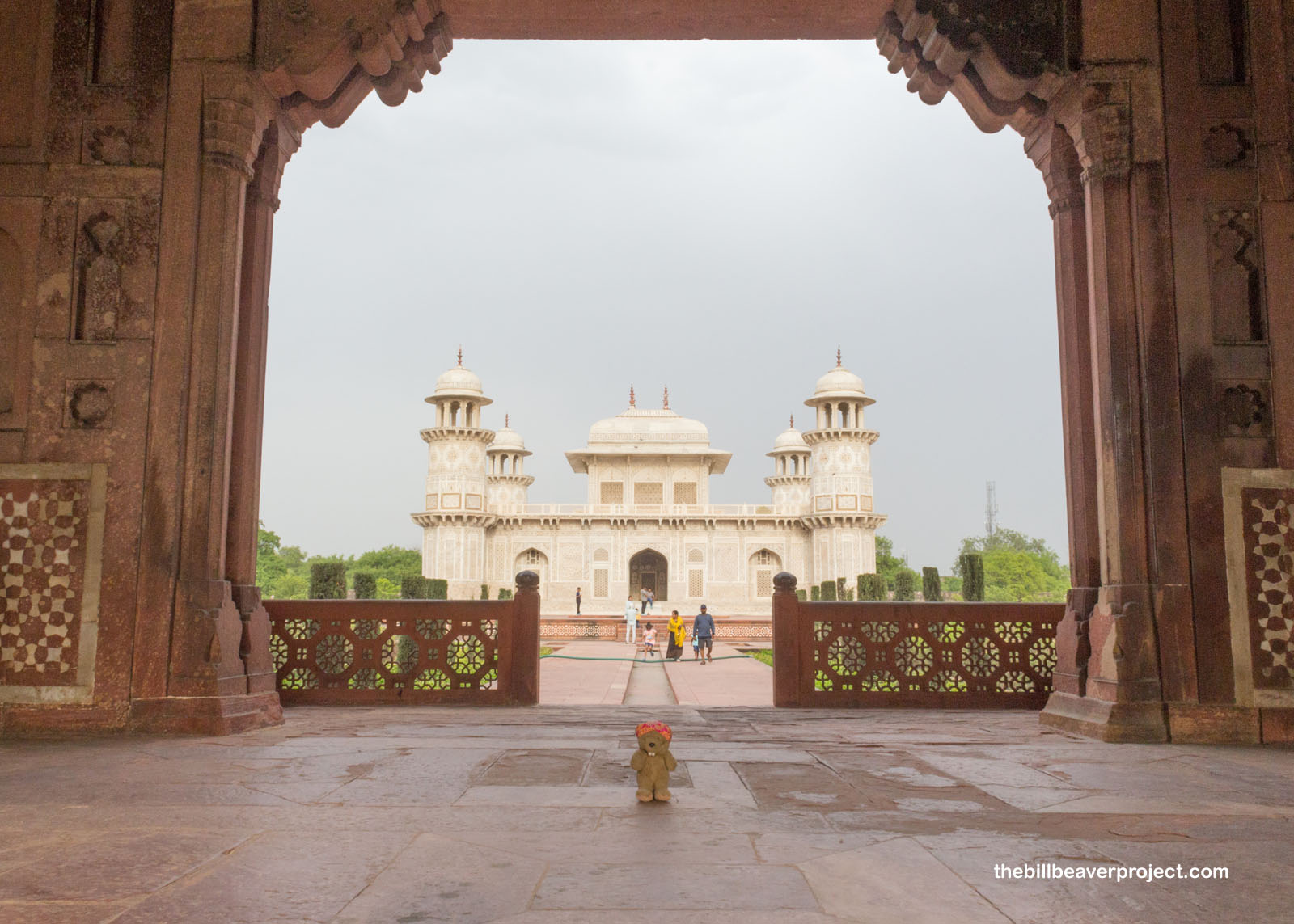 |
I didn’t think anything about these rules as we moved to our second stop on this short evening itinerary: the Mahtab-Bagh, or Moon Garden! This garden, laid out by Shah Jahan in 1652, was designed as both a pleasure garden on its own and as a place to view his wife’s magnificent mausoleum across the Yamuna River by moonlight! There are over 8,000 flowering and fruit trees in this garden, which I’ll bet is twice as splendid in the rainy season!
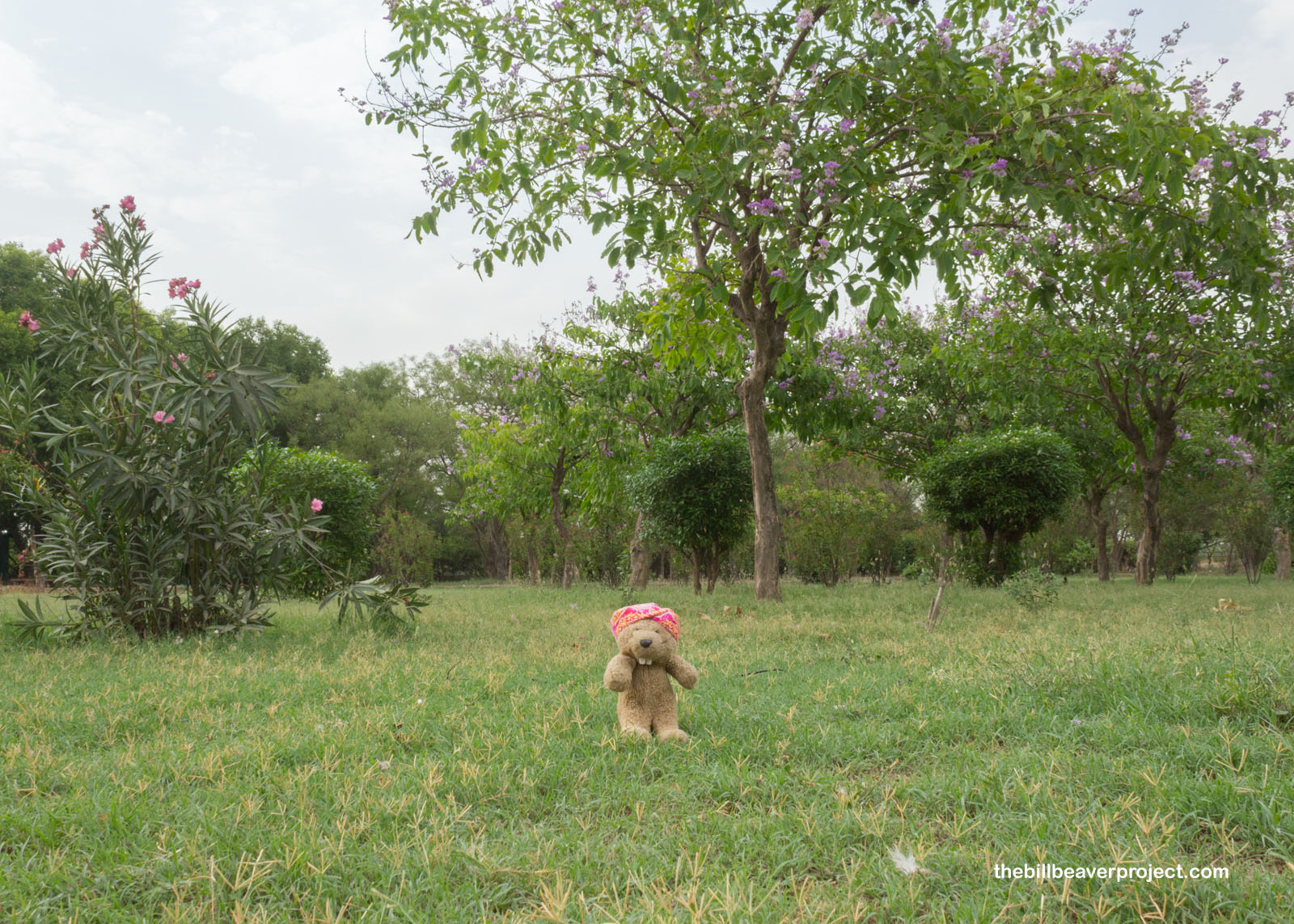 |
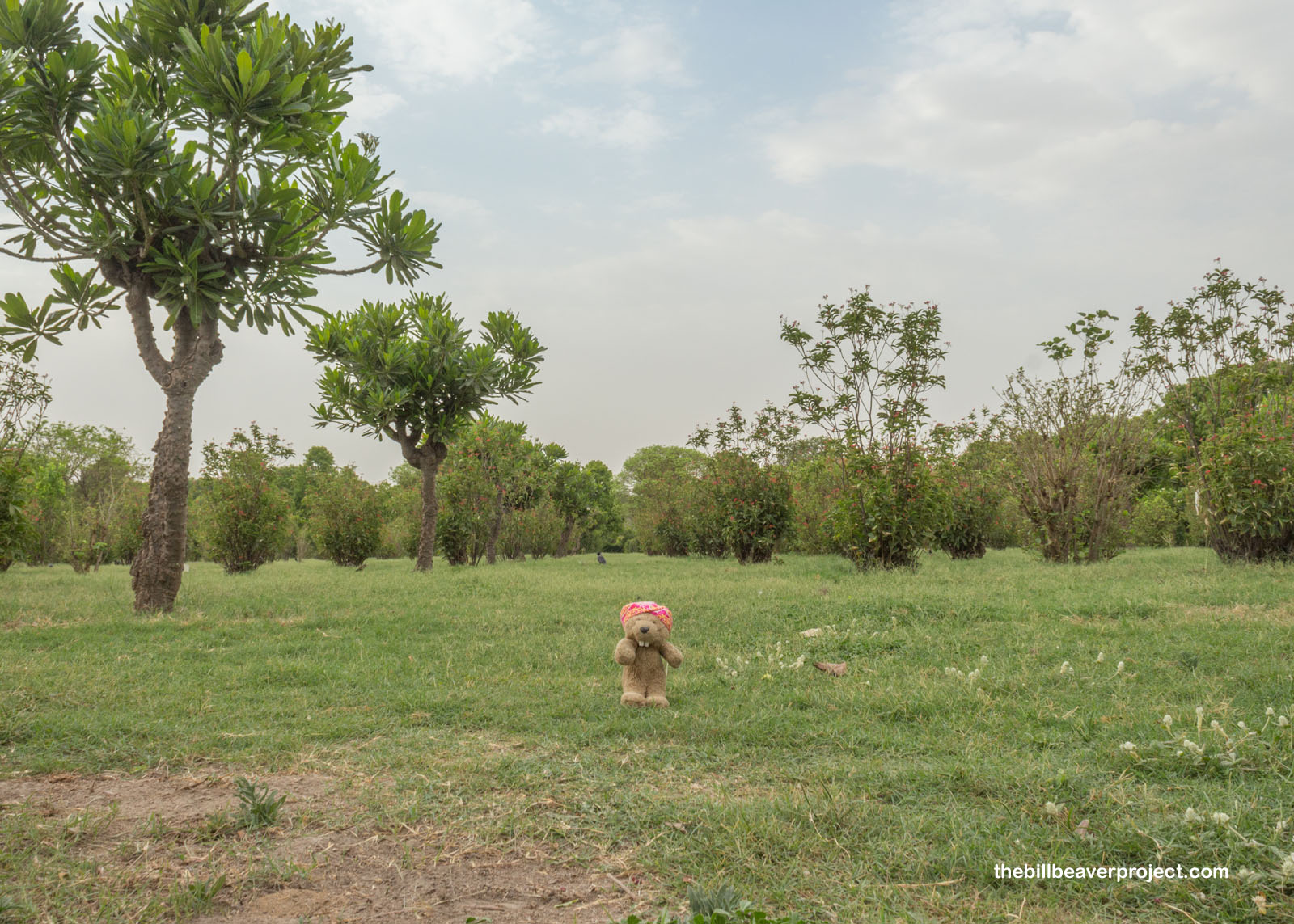 |
There was a rumor once that this charbagh was the site that Shah Jahan wanted for his own mausoleum, the fabled “Black Taj,” but that was probably just a rumor. Archaeologists did dig up the foundation of a reflecting pool whose stones had turned black with moss and age, though! In fact, it was that reflecting pool that I was approaching as the famous Taj Mahal, the Crown of the Palace, came into view!
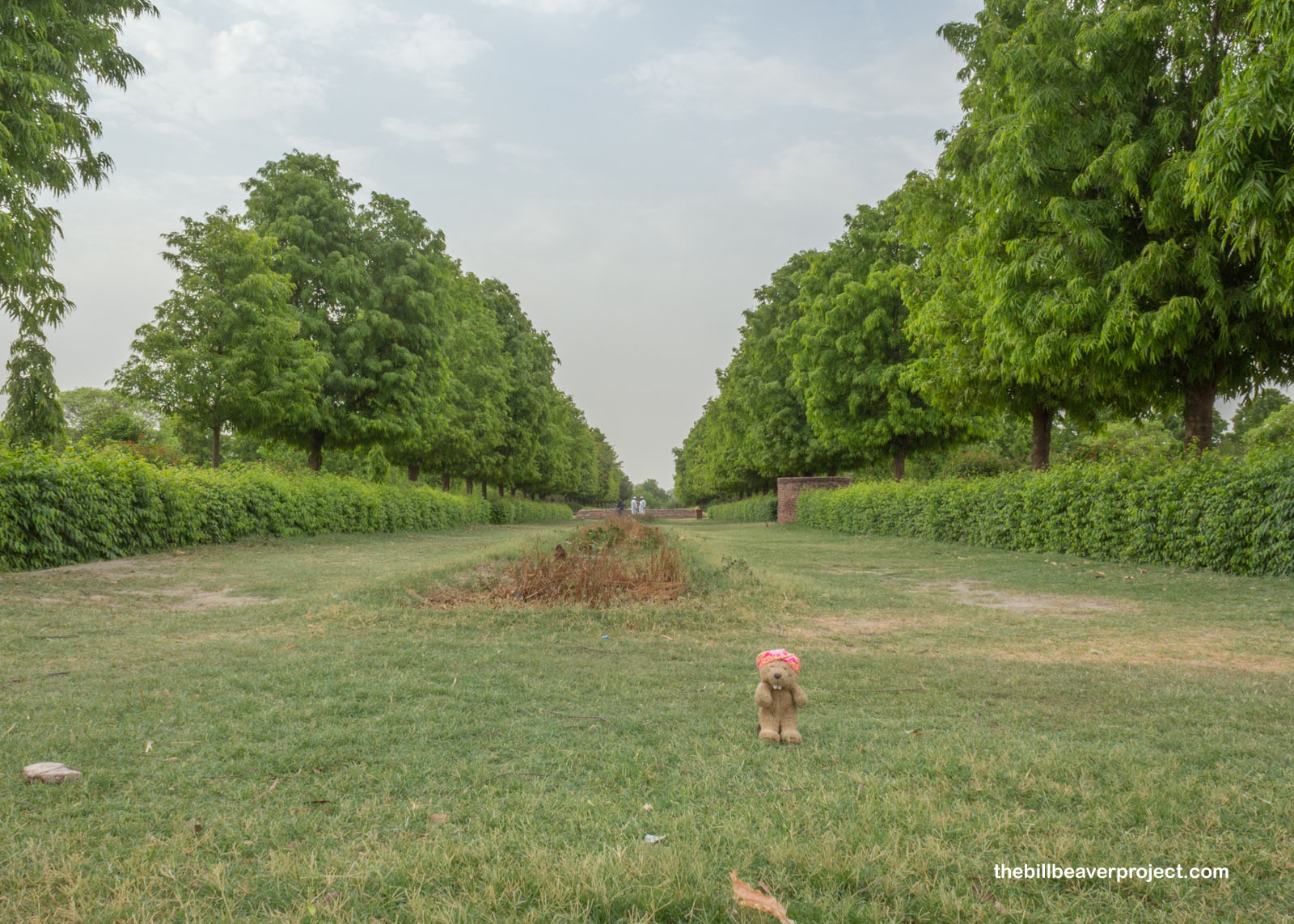 |
What a site! Beyond the ruins of the reflecting pool, I could see the 115-foot marble dome stretching up into the cloudy sky, higher than the Qutb Minar! Also built for symmetry, it had four minarets to call folks to prayer from the guest house on one side to the mosque on the other!
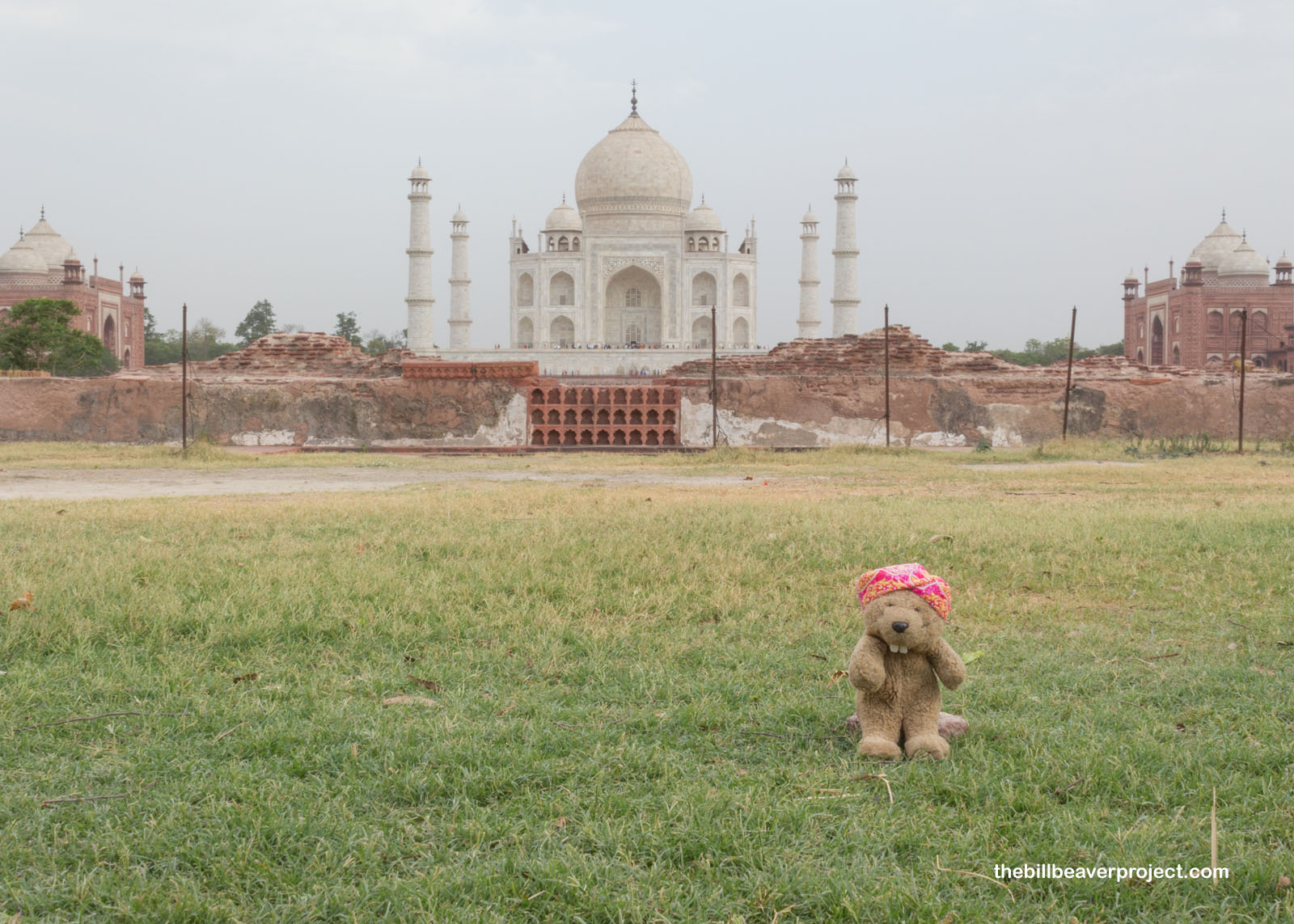 |
This Wonder of the World was built by Shah Jahan for his wife, Mumtaz Mahal, between 1632 and 1653 at a cost of what would now be $1 billion! All marble with semiprecious stones inlaid over each wall, the Taj Mahal also has inlaid quotes from the Quran over the entrances, skewing slightly larger at the top so the text looks uniform from bottom up! All of this effort was because, even though Shah Jahan had three wives, two were political alliances. Mumtaz was his love match. Sadly, she died giving birth to their 14th child, because, as Mr. Dubey said, she never got enough time between pregnancies for her body to recover.
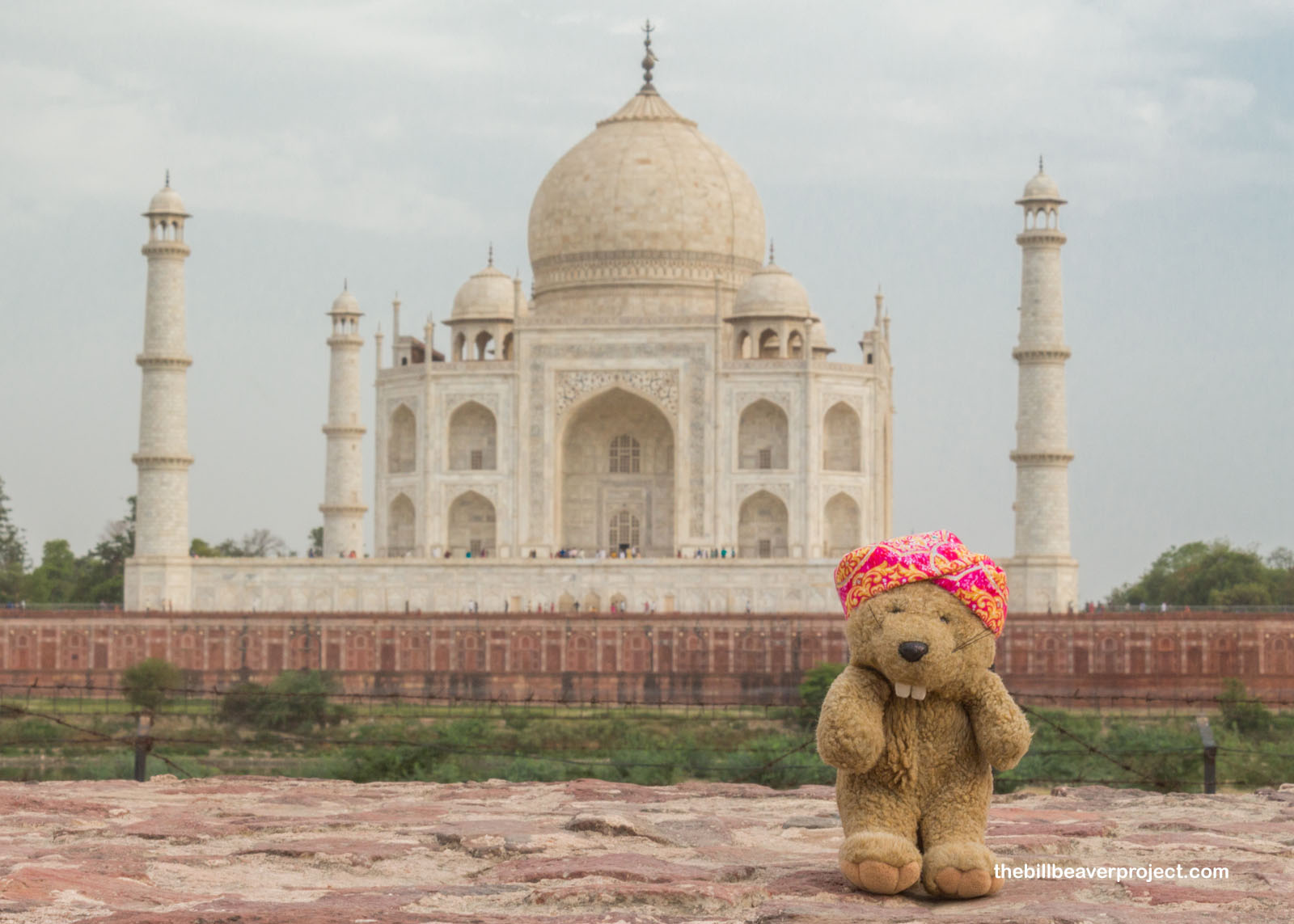 |
It was a sad story indeed, but I couldn’t wait to go in and take a closer look. That’s when Mr. Dubey gave me another sad story: No animals are allowed at Agra’s heritage sites! That’s why the guards at the Baby Taj had been so nosey. I wasn’t supposed to be there! No animals, no food, no flowers, no pens, no big bags, and no toys allowed at the Taj Mahal, and there would be no exceptions for a world traveling beaver!
That meant I wasn’t going to see the famous gardens of the Taj Mahal or the UNESCO-recognized Agra Fort either, and that was a super shame after coming all this way. It was the first Wonder of the World I wouldn’t be allowed inside, and it’s all thanks to bad people who have tried to damage it. At least I got to see it from afar, I guess. We dropped off Mr. Dubey, and Mr. Annu took me to the rooftop Salt Cafe to dip my sorrows like naan into curry. Was the trip ruined? It felt like that for a while, but I couldn’t let that feeling continue! I’ll keep a stiff upper lip and see what the next city in the Golden Triangle has in store.
Phir milenge!

 Last Stage |
Total Ground Covered: 553.8 mi (891.2 km)* *Just driving! Doesn’t include flights. |
 Next Stage |
